
views
Selecting Your Fish
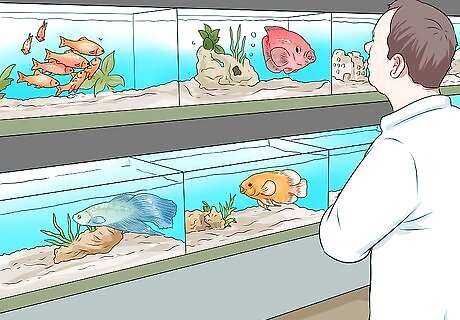
Choose aquarium fish based on your level of experience, tank size, and time commitment. If this is your first aquarium, choose hardy community fish that can survive your learning curve. Once you have a few kinds in mind, visit some fish stores and choose which colors and breeds you would like to have in your aquarium, making sure they are compatible tankmates. Hold off on buying them until your aquarium is set up and cycled. Keep the breeds you want in mind when choosing the rest of your tank elements. You will need to understand the different kinds of fish that live at the three different levels of the tank.
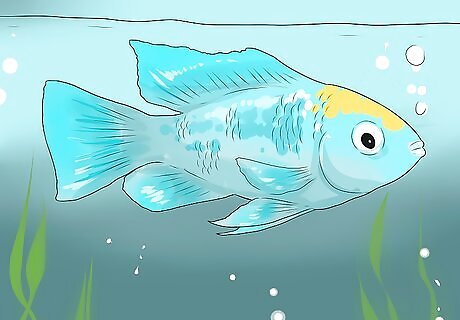
Pick your top-level fish to fill the blank space in the top level of your tank. Top level fish live near the surface. Because the top level of the water does not have much decoration or movement, having top-level fish will give the viewer something to look at in that space. Some species can jump, so take care when removing the cover of the tank.
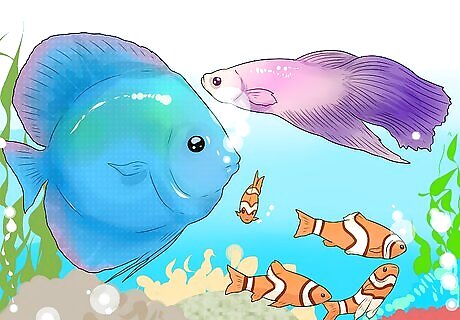
Choose mid-level fish that will be the moving centerpiece of your display. The fish that like to live in the middle space of the tank are usually the most interesting to look at. Many colorful species can make your aquarium more aesthetically pleasing. Be sure to include species of larger fish and smaller schooling fish. Guppies are a popular schooling mid-level fish.
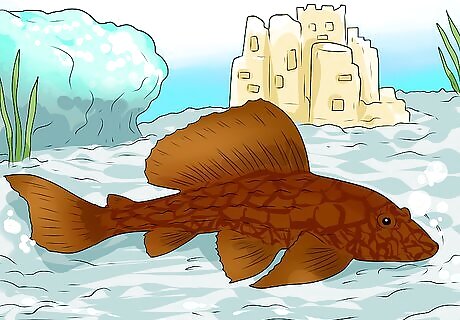
Pick your bottom-level fish to help clean material from the substrate. Plecostomus, also known as suckerfish or suckermouth catfish, are commonly used bottom-level fish that are good cleaners. Crayfish, which are actually crustaceans, come in a variety of colors and will scavenge the bottom of the tank. Remember to add foods that sink quickly to the bottom level.

Limit the number of fish to fit the tank. Overcrowding in the tank can lead to many problems and shorten the lives of your fish. The basic rule is for every gallon of water the tank holds, you can have one inch of fish. However, you should aim lower than this because tanks do not actually hold their full amount of water listed due to displacement. Know the full-grown size of the fish species. If you buy fish that are younger, they will most likely grow in size as they age, so when buying fish, be sure to plan for them to be at their full size to avoid overcrowding.
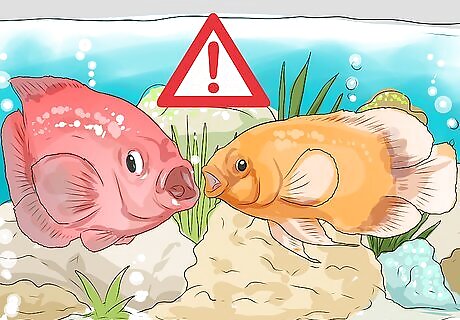
Make sure the species of fish will not conflict with each other. Fish are categorized as community, semi-aggressive, and aggressive. Other than explicitly aggressive fish, most fish can coexist without issues as long as the tank is not overcrowded and as long as you avoid putting two of the same species of male together in the tank.

Add the fish to the tank only after adding everything else. Once your tank has been set up and cycled, you are ready to purchase your fish and add them to the tank. Buy only a few fish at first, and then add the remaining fish a few at a time, with fortnightly intervals. Sit back and enjoy the view, and don't be afraid to make changes and upgrades!
Choosing Your Substrate
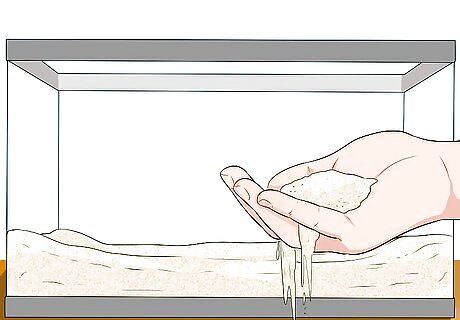
Use sand to give a more natural look to the environment in the tank. Sand is one option for the bottom of your aquarium. Sand needs to be cleaned less frequently and looks more like what exists in nature. You can even find it in a variety of colors. Some fish like to burrow into the sand. Sand, however, is more likely to clog filters.
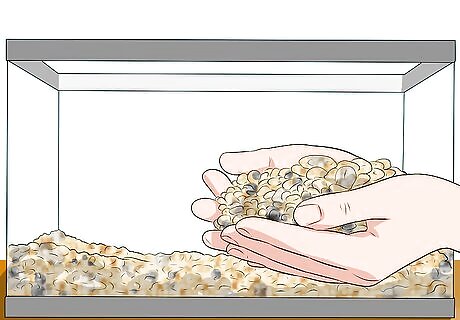
Use gravel if you want to give fish more space to hide. Gravel allows more food and organic material to fall between its gaps, so it must be cleaned more often. However, gravel is necessary for certain fish that can be harmed by consuming sand. Base your decision on the type of fish you have.
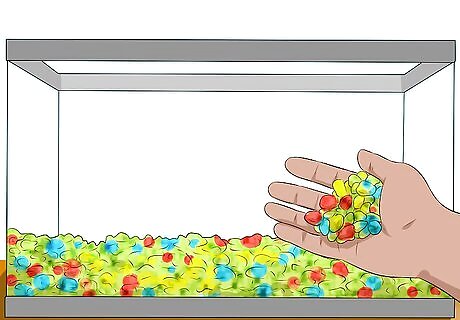
Use colored glass marbles or pebbles for a funkier look. Glass pebbles are an attractive option that also come in many different colors, giving you options for expressing your creativity. Marbles may be good for small fish to hide in, but they are more difficult to clean than other substrates because they trap so much food.
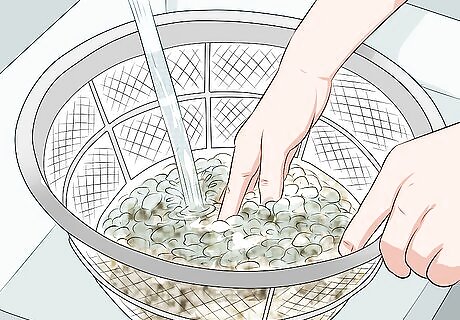
Wash your substrate before adding it to the aquarium. This will remove dust and dirt, as well as any contaminates or loose dyes that may still be hanging around. A mesh colander or a few layers of cheesecloth work well for gravel. Pour in your gravel and rinse thoroughly with warm water only. You may find it easier to wash the gravel in several small batches, rather than all at once.
Choosing Your Plants

Purchase artificial plants to add permanent decoration to the tank. Artificial plants have many benefits. While they do not provide food for the fish, this means they also will never be eaten. Fake plants are easy to take care of and will last forever. They also provide more color options if you are aiming for an extremely colorful look. With any tank decoration, especially fake plants, beware of sharp or rough edges. This is especially important if any of your fish have long, flowing fins, as these can be easily torn. Silk plants, on the other hand, do not carry the risk of harming the fish.One great way to determine if something is too rough is to get a cheap pair of nylon stockings. Run these over the edges and points of your decorations in every direction. If they catch or tear the stocking, they are too rough for your fish's' delicate fins. Buy several different types of plants for your aquarium in different shapes and sizes. A variety helps to keep the tank interesting to watch and provides different territories for your fish.
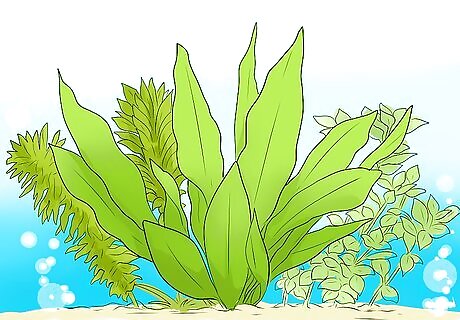
Purchase live plants to give your fish a more hospitable and natural environment. Live plants are functional in many ways. Besides providing hiding spots, they can also provide food, oxygen, and added filtration.If you will have live plants, you will need a bottom layer of nutrient-rich substrate with a sand or gravel layer on top to secure the plants in place. Without proper nutrients, plants will die.Live aquatic plants require more care, but can keep the tank cleaner and even provide food and oxygen for your fish. Hardy plants that can withstand many conditions are the way to go, especially for beginners. Anacharis grows quickly and can provide food, while crypts can grow into bushes to provide an area for fish to hide and play.
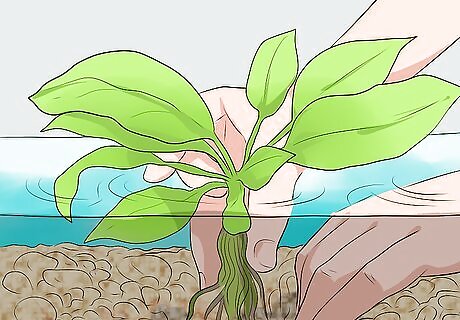
Place the plants into your aquarium tank in an organized manner. Instead of placing your plants in rows, use an "X" pattern to give a more natural look. Remember that plants will grow, so they will look increasingly natural in their placement over time; they will also take up more space over time. Place the same species of plant together to have a more natural and aesthetically-pleasing look.
Deciding on Decorations
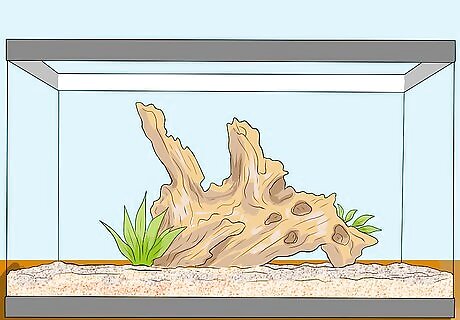
Decorate your tank with wood to provide hiding space and a potential food source. Wood is a natural decoration that adds to your aquarium's look. Algae that grows on the surface of wood can provide food for certain kinds of fish. Driftwood is a popular choice because of its twisting shape. You can sew carpet moss onto a piece of driftwood to combine wood and plant life, making the tank more resemble a natural underwater habitat. Boil any structure you plan to put in the tank in water before introducing it to your tank. Boiling will sterilize your wood or rock to make it safe for your aquarium. Boiling wood will kill any bacteria on it and remove tannins that can stain the water.
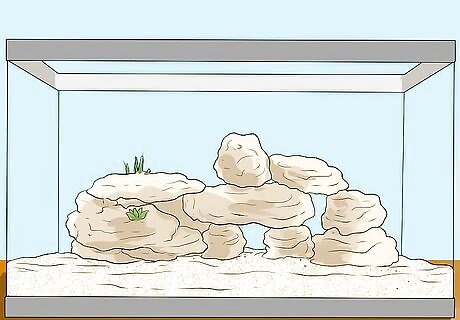
Decorate your tank with rocks to make the landscape at the bottom of the tank more interesting. Fish will also often hide behind rocks. Rocks have a variety of shapes and colors, so you can look for rocks that you think add to your overall theme. Choose rocks that speak to your sense of style. Avoid having large rocks directly touch the glass. Over time, the rocks may damage the glass, causing stress fractures or cracks. After boiling rocks, soak them overnight and then brush them to remove loose particles.
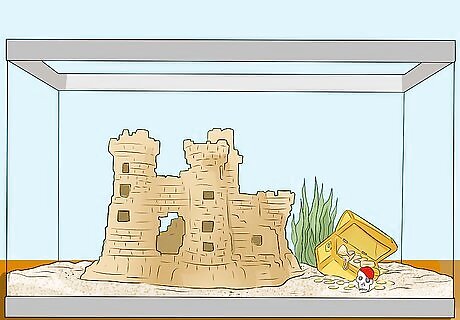
Add some artificial decorative elements for a more fantastical look. These can include the typical castles and pirate treasure, or you can go for something more imaginative. Consider getting a few decorations in different sizes to provide different territories. Like plants, structures give fish hiding places that they enjoy. Some structures can add oxygen to the water. Be very careful when buying decorations with holes or small spaces. While these can be ideal hiding places for smaller fish, larger fish can become stuck and get injured or even die trying to get out. Be sure any hole or archway is significantly larger than your largest fish. If you have young fish, keep in mind their full grown size when picking out such decorations.
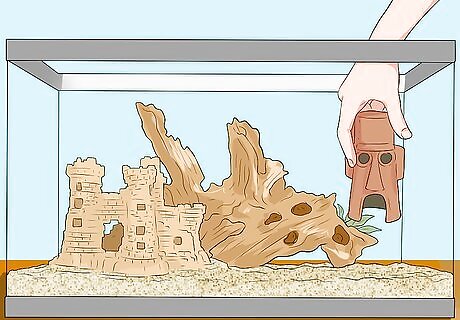
Arrange the items in the tank artfully without overcrowding the space. Experiment with the placement of your decorations to find something that is aesthetically pleasing to you. Having one main decoration that is larger than everything else can provide a good focal point, but also make sure it won't crowd your tank. Balance items with empty space.

Purchase a background to enhance the overall aesthetic appeal of the aquarium display. If one side of your aquarium is going to face a wall, consider attaching a background to it. These simple sheets of plastic can be bought at any pet store, and come printed with beautiful pictures, from undersea plants to deserts. A simple black background will lend a very professional look, hiding cords and tubing and making the colors in your aquarium stand out, especially if you have a lot of plants. If your aquarium is looking a little sparse, a background printed with plants or coral reefs can give the impression of a much lusher environment. Choose a background that fits your theme. An image of a coral reef suggests a natural space. You could go in the other direction with something like a space-themed background if you want a more unique theme. Measure your tank before going to the store, and buy a piece at least 1" longer than your tank to account for uneven edges. When you get home, cut it down to the proper size and tape it to the outside of the back of your aquarium.















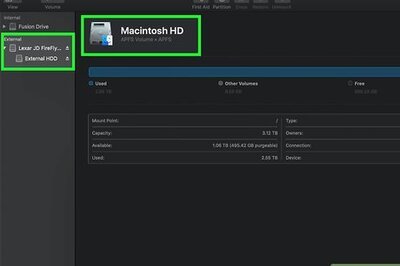



Comments
0 comment